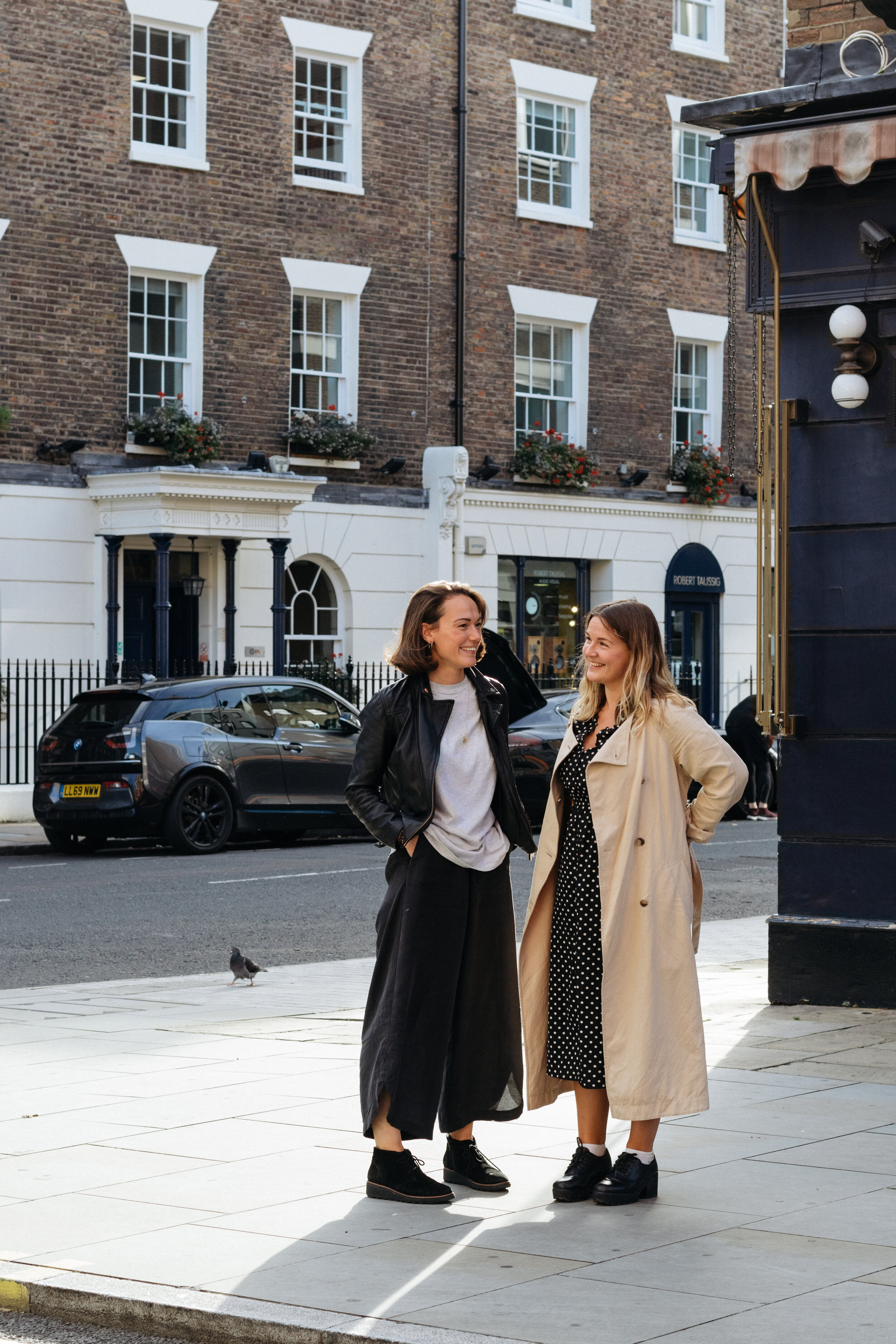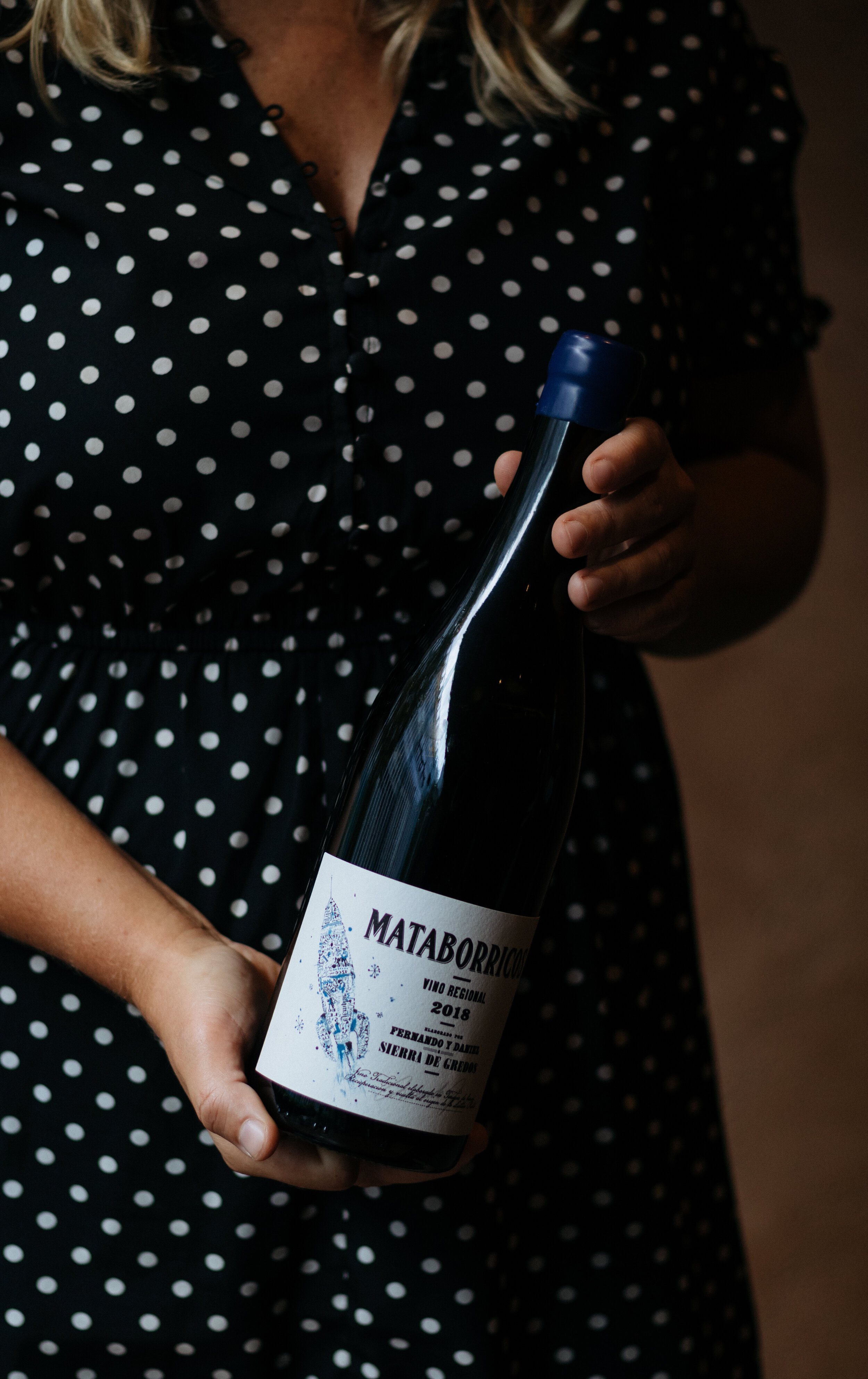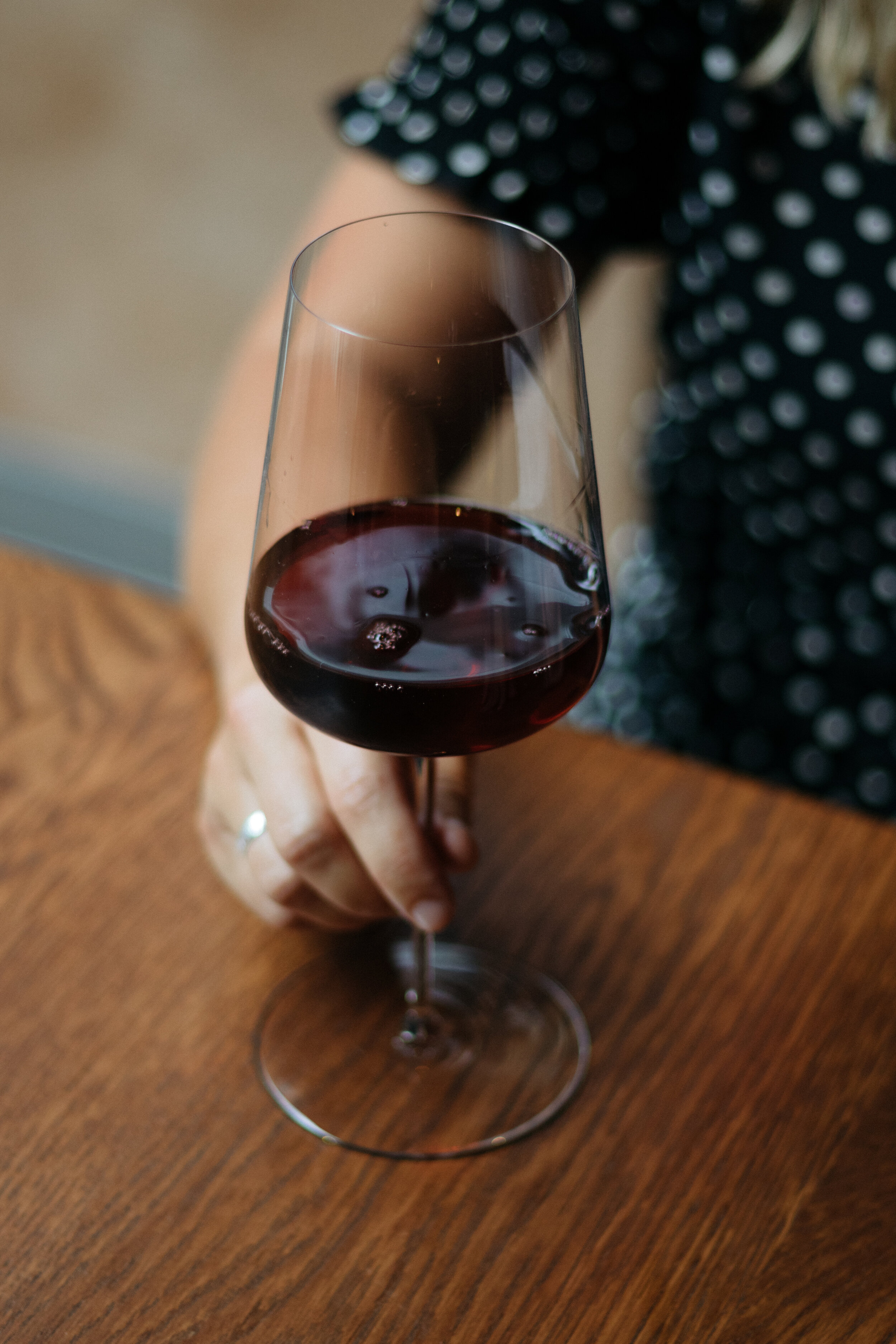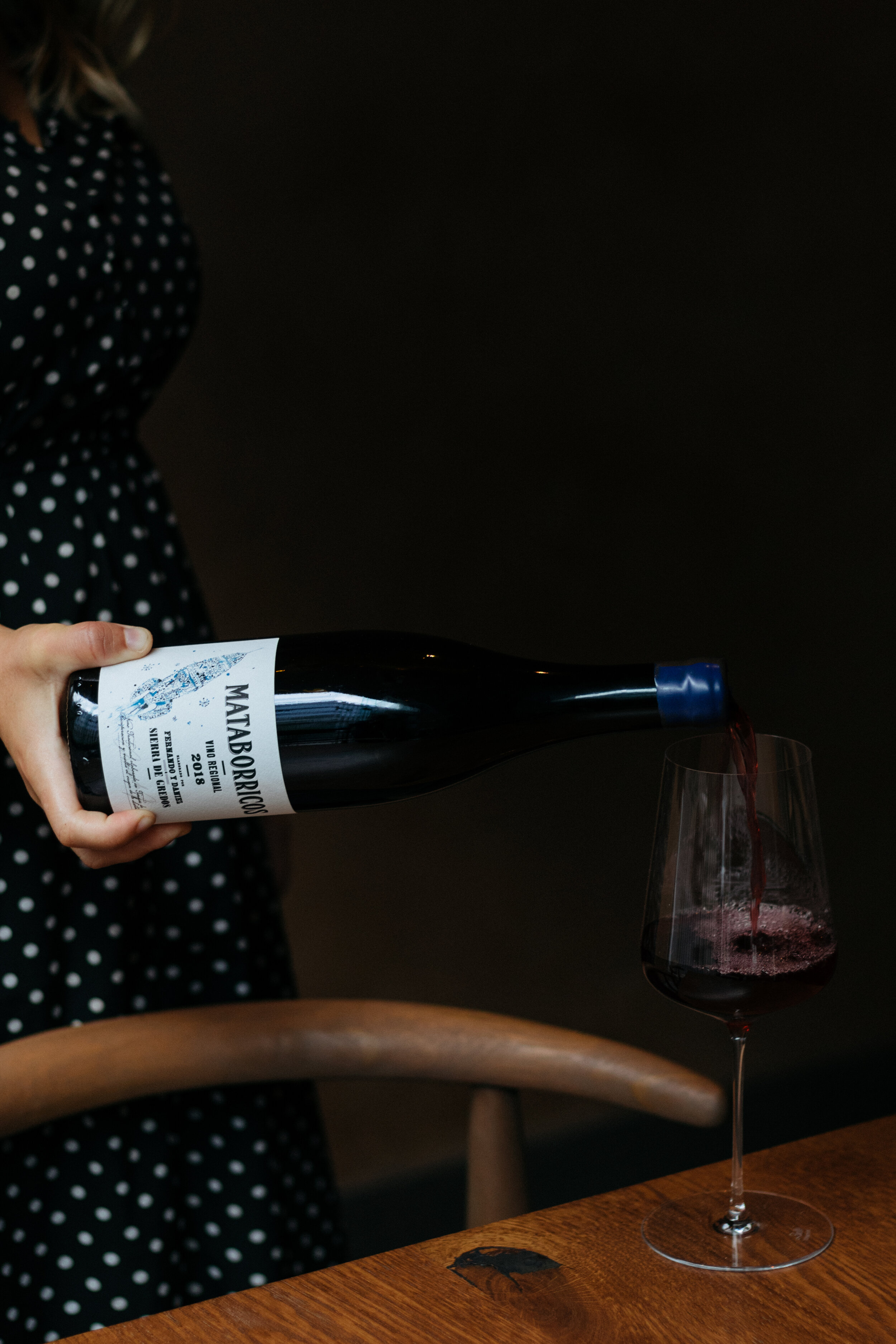Honest Wines
Interview and Photography by Ariana Ruth
How did the two of you meet?
A: We met during Honey’s alumni take over at Sager and Wilde wine bar during RAW Fair 2017 while I was working there.
H: It was love at first sight! Or should I say ’sip’! Seriously, though we hit it off right away.
What first got you interested in wine?
A: I just loved reading wine books and chatting to a sommelier at the restaurants. Then started travelling to the wine regions and meeting winemakers. I loved the feeling of trying a wine poured for you by a person who made it. It feels so special every time. So it got me hooked to try more wine.
H: My parents tell a story about me drinking wine from their ‘bag in box’ wines as a toddler. Apparently, I’d just put my head underneath the little plastic tap and guzzle to my heart’s content until one day they found me doing it! When I ‘grew up’, I always loved working in restaurants, but it wasn’t until I got to work amongst a proper sommelier team at Jamie’s Fifteen that I fell hook, line and sinker for wine as a subject. I just loved that I could combine my skills of being personal and hospitable with the academia side of learning about producers and terrors.
For me, simplicity is key: I am drawn to honest wines made by honest people with dedication to the environment but also quality.
- Ania
When I taste a wine, the first thing I do is wait to see how it makes me feel.
- Honey
Why low intervention wine?
A: We love these wines because they come with more personality, and evolve as you drink them. They are also made by producers who are mindful of treading lightly on the earth, and of course, we wholeheartedly support that vision.
H: I agree with Ania. Natural or low intervention wines are alive! You can taste it! From a restaurant point of view, they are more versatile and infinitely more interesting than industrially-produced wines when it comes to pairing with food. And of course, drinking these wines is investing in small-scale artisans who are working to protect our soils and the future of winemaking (and all agricultures) for future generations.
Tell us a bit about your ethos, and what qualities you look for when choosing a wine?
A: For me, simplicity is key: I am drawn to honest wines made by honest people with dedication to the environment but also quality.
H: When I taste a wine, the first thing I do is wait to see how it makes me feel. It sounds a bit esoteric, but ever-increasing experience + our base intuition has served us both well so far in our careers. We can taste if a wine is authentic: if it’s made responsibly by someone who truly cares who has done their best to preserve and translate their terroirs to bottle. I then assess it commercially. What projects am I working on whose wine lists would benefit from this wine? How much would I list it for? Is it suitable by the glass or would I include it in a wine pairing, etc.? People always comment that I’m strangely quiet at tastings, but I like to listen to what the wine has to say before I open my mouth!
Any exciting projects in the works?
A: We delivered the wine list to the West African restaurant Akoko, so we work with them regularly to adapt the offering in line with the seasons and menu changes. We will be looking for new fun projects too, as we love what we do and are always looking for opportunities to get people hooked on minimal intervention wines!
H: Akoko has been the most incredible project, and we are so proud of the wine list and how it blends into the ethos and style of the restaurant. We decide to err on the daring side, listing more challenging wines and wines from off-the-beaten-track regions, but happily, it is paying off. We are now in the process of building our own wine + sustainability school for wine lovers as well as setting up a mentorship collective for women with some of our colleagues across the wine industry.
Tell us a bit more about S+S and the way you work with restaurants and chefs.
H: Akoko ended up being a far larger project than we initially expected, and we became a lot more involved in it than we had anticipated. Now we couldn’t imagine being any less involved when it comes to future projects. The owners of Akoko were keen for us to attend all their tastings, from the very ‘bare-bones’ to the finished product. I was living in Copenhagen at the time and would fly over for them (I was also pretty pregnant at the time!). We could see their vision evolve and take shape over time, and we were able to mirror that journey with our wine choices. We also ended up helping to hire a significant chunk of their staff, as we knew that we needed people that supported our vision for the wine program and could translate it to guests. We also worked every service for the first month to help train the staff on the ground and make sure they felt comfortable and motivated to deliver the wine pairings and suggest glasses and bottles. Now the restaurant is up and running; we continue to mentor the junior sommelier we put in place and are on-site regularly to refresh the list in line with menu changes and carry on our wine coaching of the front of house team.
Tell us about your creative process when it comes to creating a wine list and wine pairings.
A+H: Firstly, we think about the identity of the restaurant and endeavour to match that with exciting wines made by similar-minded people. It was a great challenge curating a wine program for West African cuisine. After establishing the overarching feel and ambitions for the restaurant, we started studying the traditional spices and recipes indigenous to West African cuisine. Many of these Akoko were importing themselves as they weren’t available in the UK, which we loved! We found the spices hit further back on the palate, allowing us to select wines that would deliver freshness at the first sip and develop more weight towards the end, meaning the wines would develop at the same time as the spice and create a sense of balance. Every project is different, but we are certainly developing a Spencer + Smelskaya house style: authentic and highly-involved and researched one-off wine programs for restaurants we believe in.
What wines are you looking forward to drinking this winter?
A: I am on a cider journey as I am currently doing an internship at Find and Foster. But also recently tried a red pet nat from local winery Offbeat wines and I encourage everyone to try more red bubbles!
H: I am eternally inspired by Ania’s cider journey and try to follow along as much as I can with that. I’ve developed an obsession with an English artisan company called Capreolus making English Eau de Vie which is captivating, so I look forward to sipping that on the sofa this winter. And, of course, the perpetual search for the tastiest skin-macerated wines that we can use to create ambitious wine pairings. That’s always at the front of our thinking.
Who are some of the winemakers that you’re really excited about at the moment?
H: I’m revisiting a lot of the wines from my first winemaker boss, Taras Ochota, who sadly passed. Taras learned the rules and then broke them in the most spectacular and delicious ways. His cuvée ‘Weird Berries in the Woods’ has to be my favourite, and drinking it takes me back to a very happy time. I continue to look to Georgia to see what they are up to; despite being one of the first (if not the first) countries ever to make wine, the quality keeps getting better and better. We love Ramaz Nikoladze and John Okro.
A: Can’t help myself not to mention cider - innovative skin-contact, pet-nat cider Snicket and naturally off-dry sparkling cider Huxham by Find and Foster. As I said above Offbeat wines pleasantly surprised me recently and orange wine Eastern Accents by Hungarian lady winemaker Reka Koncz.
From the back end, we work to help persuade producers to boost their sustainability efforts, whether that be to ditch unnecessary packaging on bottles, use lighter bottles or transport in more environmentally friendly ways.
Do you ever branch out into ciders and beer?
A+H: We both are strong advocates of natural and fine ciders. As with wine, the world of cider is incredibly diverse (from keeved ciders, and refined ciders to ice ciders, etc.), and they are really fun to pair with food, particularly when it comes to building up textures and enhancing salinity in dishes. And as Ania says, Pommeliers are the new Sommeliers!
Both of you have backgrounds working in sustainable restaurants; how do you try and incorporate that into your wine offerings?
A+H: As part of our consultancy offering, we have built a syllabus that covers the notion of sustainability and how it applies to the world of wine. From the back end, we work to help persuade producers to boost their sustainability efforts, whether that be to ditch unnecessary packaging on bottles, use lighter bottles or transport in more environmentally friendly ways.




